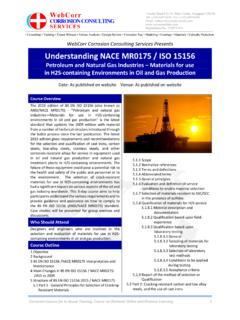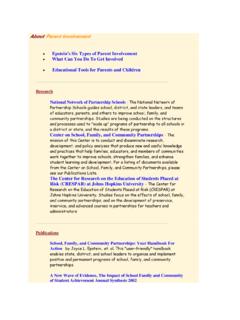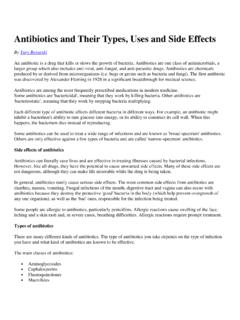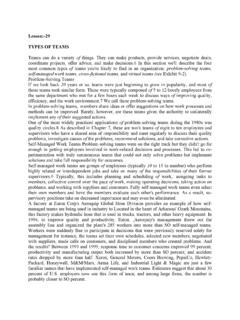Transcription of Different Types of Corrosion
1 Uniform Galvanic Crevice Pitting Intergranular SSC LME MIC SCC HB HE HIC Fatigue Erosion Stray Current Index Different Types of Corrosion Recognition, Mechanisms & Prevention Pitting Corrosion Recognition What is pitting Corrosion ? Pitting Corrosion is the localized Corrosion of a metal surface confined to a point or small area, that takes the form of cavities. Pitting is one of the most damaging forms of Corrosion . Pitting factor is the ratio of the depth of the deepest pit resulting from Corrosion divided by the average penetration as calculated from weight loss. The following photo shows pitting Corrosion of SAF2304 duplex stainless steel after exposure to NaCl solution. Pitting Corrosion forms on passive metals and alloys like stainless steel when the ultra thin passive film (oxide film) is chemically or mechanically damaged and does not immediately re passivate.
2 The resulting pits can become wide and shallow or narrow and deep which can rapidly perforate the wall thickness of a metal. 1. ASTM G46 has a standard visual chart for rating of pitting Corrosion . The shape of pitting Corrosion can only be identified through metallography where a pitted sample is cross sectioned and the shape the size and the depth of penetration can be determined. Mechanisms What causes pitting Corrosion ? For a defect free "perfect" material, pitting Corrosion IS caused by the ENVIRONMENT (chemistry) that may contain aggressive chemical species such as chloride. Chloride is particularly damaging to the passive film (oxide) so pitting can initiate at oxide breaks. The environment may also set up a differential aeration cell (a water droplet on the surface of a steel, for example). and pitting can initiate at the anodic site (centre of the water droplet).
3 For a homogeneous environment, pitting IS caused by the MATERIAL that may contain inclusions (MnS is the major culprit for the initiation of pitting in steels) or defects. In most cases, both the environment and the material contribute to pit initiation. The ENVIRONMENT (chemistry) and the MATERIAL (metallurgy) factors determine whether an existing pit can be repassivated or not. Sufficient aeration (supply of oxygen to the reaction site) may enhance the formation of oxide at the pitting site and thus repassivate or heal the damaged passive film (oxide) the pit is repassivated and no pitting occurs. An existing pit can also be repassivated if the material contains sufficient amount of alloying elements such as Cr, Mo, Ti, W, N, These elements, particularly Mo, can significantly enhance the enrichment of Cr in the oxide and thus heals or repassivates the pit.
4 More details on the alloying effects can be found in the technical paper on "Stainless Steels and Alloys: Why They Resist Corrosion and How They Fail". Prevention How to prevent pitting Corrosion ? Pitting Corrosion can be prevented through: 2. z Proper selection of materials with known resistance to the service environment z Control pH, chloride concentration and temperature z Cathodic protection and/or Anodic Protection z Use higher alloys (ASTM G48) for increased resistance to pitting Corrosion For more details More details on pitting Corrosion are included in the following Corrosion courses which you can take as in house training courses, online courses or distance learning courses: Corrosion and Its Prevention (5 day module) Corrosion and Its Prevention (2 day module) Corrosion , Metallurgy, Failure Analysis and Prevention (3 days) Marine Corrosion , Causes and Prevention (2 days) Materials Selection and Corrosion (2 days) Stainless Steels and Alloys: Why They Resist Corrosion and How They Fail (2 days).
5 Home | Subject Index | Contact Us Copyright 1995 2011. All rights reserved. 3.







